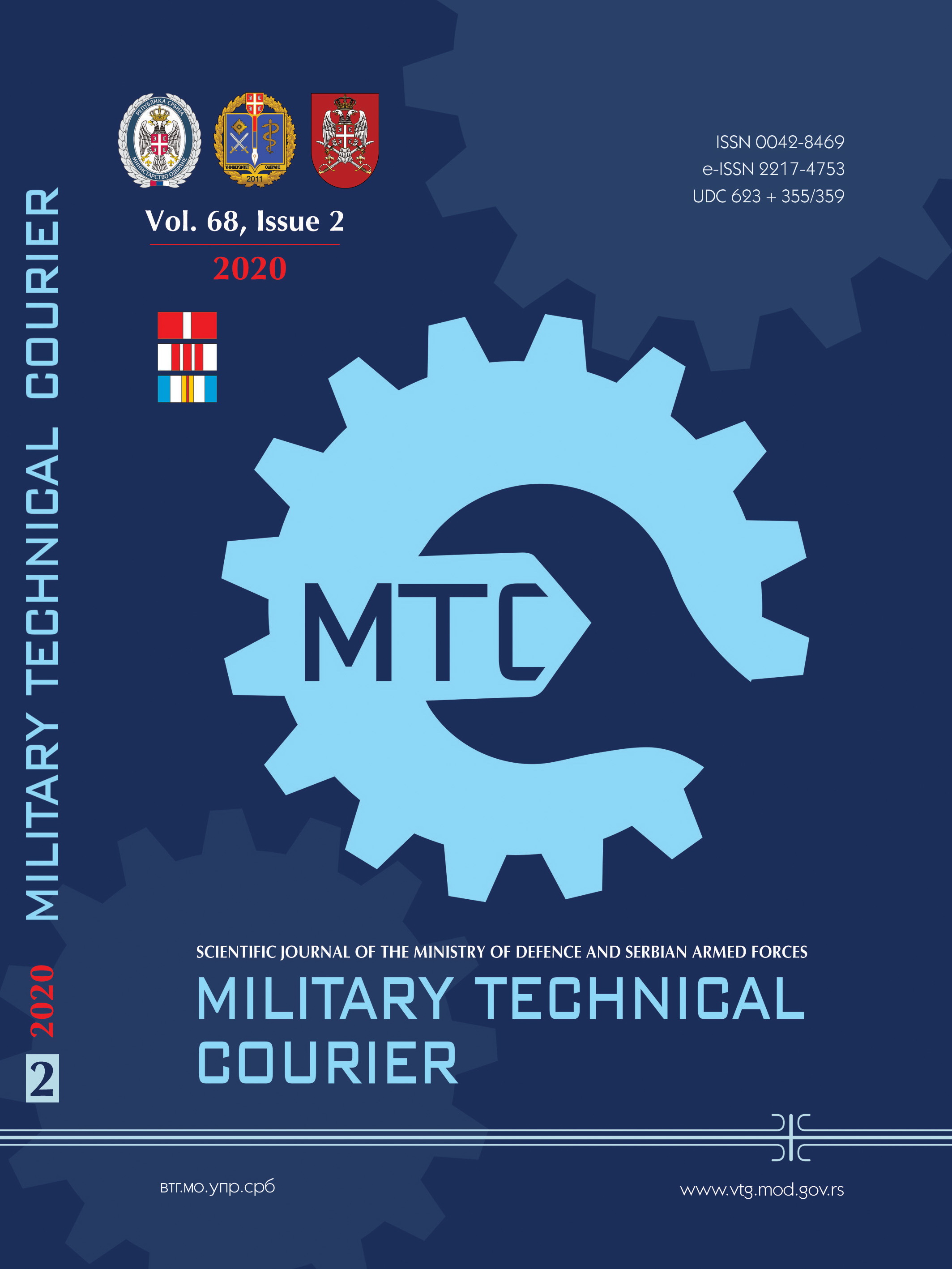Recovery of cobalt from primary and secondary materials - an overiew
Abstract
Introduction/purpose: Cobalt is a strategic metal for industrial application. Cobalt recovery from oxidic ores such as laterite and sulphidic ores, and from secondary materials during acidic treatment and precipitation is a highly used strategy ensuring different products such as cobalt hydroxide, cobalt oxide, and finally metallic cobalt.
Methods: Familiarity with cobalt behavior in hydrometallurgical processes such as dissolution at atmospheric and high pressure, precipitation, neutralization, filtration and hydrogen reduction is most important for cobalt recovery from ores and secondary materials. Pyrometallurgical methods such as roasting and flash smelting are applied for the treatment of sulphidic ores combined with solvent extraction and electrolysis in order to obtain cathodic cobalt.
Results: Powders of nickel-cobalt hydroxide were obtained from ores using sulphuric acid under high pressure in an autoclave and after precipitation with MgO. Solvent extraction was used to separate cobalt from nickel. The final step of cobalt recovery from a solution is using electrolysis. Cobalt and cobalt compounds such as cobalt carbonate and cobalt hydroxide can be obtained from secondary materials in hydrometallurgical operations.
Conclusion: Hydrometallurgical and pyrometallurgical processes are mostly applied for cobalt recovery from primary ores (oxidic and sulphidic compounds) and from secondary materials (cemented tungsten carbide, polycrystalline diamond blanks, and waste cathodic materials from lithium-ion batteries).
References
Dannenberg, R.O., Gardner, P.C., Crane, S.R, & Seidel, D.C. 1987. Recovery of Cobalt and Copper from Complex Sulfide Concentrate. Spokane, WA: U.S. Bureau of Mines Report of Investigations, pp.1-20.
De Graaf, J.E. 1979. The treatment of lateritic nickel ores - a further study of the Caron process and other possible improvements. Part I. Effect of reduction conditions. Hydrometallurgy, 5(1), pp.47-65. Available at: https://doi.org/10.1016/0304-386X(79)90027-6.
Forward, F.A., & Mackiw, V.N. 1955. Chemistry of the Ammonia Pressure Process for Leaching Ni, Cu, and Co from Sherritt Gordon Sulphide Concentrates. JOM, 7(3), pp.457-463. Available at: https://doi.org/10.1007/BF03377530.
Georgi-Maschler, T., Friedrich, B., Weyhe, R, Heegn, H., & Rutz, M. 2012. Development of a recycling process for Li-ion batteries. Journal of Power Sources, 207, pp.173–182. Available at: https://doi.org/10.1016/j.jpowsour.2012.01.152.
Gürmen, S., Stopić, S, & Friedrich, B. 2006. Synthesis of nanosized spherical cobalt powder by ultrasonic spray pyrolysis method. Materials Research Bulletin, 41(10), pp.1882-1890. Available at: https://doi.org/10.1016/j.materresbull.2006.03.006.
Han, K.N. & Meng, X. 1993. The leaching behavior of nickel and cobalt from metals and ores - a review. In: The Paul E. Queneau International Symposium Extractive Metallurgy of Copper, Nickel and Cobalt. Volume 1: Fundamental Aspects, Denver, USA, February 21-25.
Huang, J.H., Kargl-Simard, C., Oliazadeh, M., & Alfantazi, A.M. 2004. pH-controlled precipitation of cobalt and molybdenum from industrial waste effluents of a cobalt electrodeposition process. Hydrometallurgy, 75(1-4), pp.77-90. Available at: https://doi.org/10.1016/j.hydromet.2004.06.008.
Moskalyk, R.R, & Alfantazi, A.M. 2002. Nickel laterite processing and electrowinning practice. Minerals Engineering, 15(8), pp.593-605. Available at: https://doi.org/10.1016/S0892-6875(02)00083-3.
Müller, T., & Friedrich, B. 2006. Development of a recycling process for nickel-metal hydride batteries. Journal of Power Sources, 158(2), pp.1498–1509. Available at: https://doi.org/10.1016/j.jpowsour.2005.10.046.
Narasimhan, K.S, Bhima Rao, R., & Das, B. 1989. Technical note- Characterisation and concentration of laterites. Minerals Engineering, 2(3), pp.425-429. Available at: https://doi.org/10.1016/0892-6875(89)90011-3.
Olanipekun, E.O. 2000. Kinetics of leaching laterite. International Journal Mineral Processing, 60(1), pp.9-14. Available at: https://doi.org/10.1016/S0301-7516(99)00067-8.
Stopić, S, & Friedrich, B. 2016. Hydrometallurgical processing of nickel lateritic ores. Vojnotehnički glasnik/Military Technical Courier, 64(4), pp.1033-1047. Available at: https://doi.org/10.5937/vojtehg64-10592.
Strong, H.M., & Chrenko, R.M. 1971. Diamond growth rates and physical properties of laboratory-made diamond. Journal of Physical Chemistry, 75(12), pp.1838–1843. Available at: https://doi.org/10.1021/j100681a014.
Tian, Q., Xin, Y., Wang, H., & Guo, X. 2017. Potential-controlled selective recovery of manganese and cobalt from cobalt slag leaching solution, Hydrometallurgy, 169(May), pp.201-206. Available at: https://doi.org/10.1016/j.hydromet.2017.01.011.
Wakenge, C.I., Dijkzeul, D., & Vlassenroot, K. 2018. Regulating the old game of smuggling? Coltan mining, trade and reforms in the Democratic Republic of the Congo. Journal of Modern African Studies, 56(3), pp.497-522. Available at: https://doi.org/10.1017/S0022278X18000332.
Wang, S. 2006. Cobalt - Its recovery, recycling, and application. JOM, 58(10), pp.47-50. Available at: https://doi.org/10.1007/s11837-006-0201-y.
Wang, H., & Friedrich, B. 2015. Development of a Highly Efficient Hydrometallurgical Recycling Process for Automotive L-Ion Batteries. Journal of Sustainable Metallurgy, 1(2), pp.168-178. Available at: https://doi.org/10.1007/s40831-015-0016-6.
Proposed Creative Commons Copyright Notices
Proposed Policy for Military Technical Courier (Journals That Offer Open Access)
Authors who publish with this journal agree to the following terms:
Authors retain copyright and grant the journal right of first publication with the work simultaneously licensed under a Creative Commons Attribution License that allows others to share the work with an acknowledgement of the work's authorship and initial publication in this journal.
- Authors are able to enter into separate, additional contractual arrangements for the non-exclusive distribution of the journal's published version of the work (e.g., post it to an institutional repository or publish it in a book), with an acknowledgement of its initial publication in this journal.
- Authors are permitted and encouraged to post their work online (e.g., in institutional repositories or on their website) prior to and during the submission process, as it can lead to productive exchanges, as well as earlier and greater citation of published work (See The Effect of Open Access).

